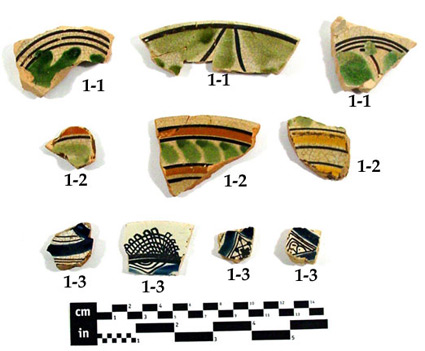Spanish Women at Mission San Luis
Spanish Women
 Spanish women played an important role in the domestic and foodways history of 16th and 17th century Florida. After all, they were a part of Florida’s history since the earliest Spanish expeditions to Florida in the 1500s, and were involved in establishing Spanish settlements in Northwest Florida such as Mission San Luis. But Spanish women’s culinary influence was often different than that of the Apalachee Indian women at San Luis, who were the primary cooks. One reason involved demographics. In addition to Apalachee women having greater knowledge of Florida foodways, there were simply more Florida Native women than Spanish women in most of the colonies in Florida. And most households that did have Spanish women as the matriarchs still had Apalachee women workers/servants to do the majority of the food preparation and cooking.
Spanish women played an important role in the domestic and foodways history of 16th and 17th century Florida. After all, they were a part of Florida’s history since the earliest Spanish expeditions to Florida in the 1500s, and were involved in establishing Spanish settlements in Northwest Florida such as Mission San Luis. But Spanish women’s culinary influence was often different than that of the Apalachee Indian women at San Luis, who were the primary cooks. One reason involved demographics. In addition to Apalachee women having greater knowledge of Florida foodways, there were simply more Florida Native women than Spanish women in most of the colonies in Florida. And most households that did have Spanish women as the matriarchs still had Apalachee women workers/servants to do the majority of the food preparation and cooking.
 However, we can identify particular ways that Spanish women influenced the food culture of Florida. Certainly, they brought knowledge of how to make favorite recipes from Spain, Cuba, and Mexico, as well as how to use new ingredients and spices imported from around the world (like olive oil, figs, saffron, black pepper, and cinnamon). The Spanish seem to have had a certain amount of pride in being able to have/afford these popular Spanish foods in Florida.
However, we can identify particular ways that Spanish women influenced the food culture of Florida. Certainly, they brought knowledge of how to make favorite recipes from Spain, Cuba, and Mexico, as well as how to use new ingredients and spices imported from around the world (like olive oil, figs, saffron, black pepper, and cinnamon). The Spanish seem to have had a certain amount of pride in being able to have/afford these popular Spanish foods in Florida.
Spanish women also monitored and directed at least some of the cooking done by Apalachee women serving their homes. Juana Catalina de Florencia – the wife of San Luis’ Deputy Governor - had at least seven Apalachee women to provide and prepare food for her household (learn more about Juana and her authoritarian approach to Spanish domestic life at Mission San Luis here.)
 Spanish women also likely helped introduce certain types of dishware into Spanish colonies of Florida. It was considered a status symbol in Spanish households to have fine imported Mexican majolica dishware or Asian porcelain on your dinner table, and Spanish women were usually involved in deciding/influencing how to furnish their home. Some of this dishware may even have been part of the dowry (wedding inheritance) that a Spanish girl was given by her family at the time of marriage. It may also have been Spanish women who requested that the Apalachee women workers/servants make a new type of pottery: Colonoware.
Spanish women also likely helped introduce certain types of dishware into Spanish colonies of Florida. It was considered a status symbol in Spanish households to have fine imported Mexican majolica dishware or Asian porcelain on your dinner table, and Spanish women were usually involved in deciding/influencing how to furnish their home. Some of this dishware may even have been part of the dowry (wedding inheritance) that a Spanish girl was given by her family at the time of marriage. It may also have been Spanish women who requested that the Apalachee women workers/servants make a new type of pottery: Colonoware.
Image: Shards of majolica found at Mission San Luis

